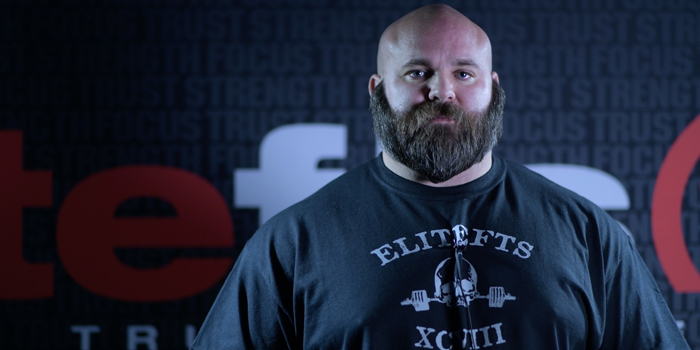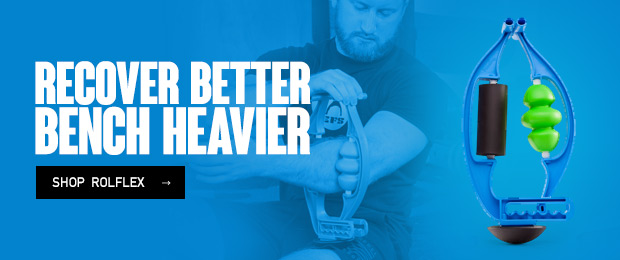
After years of training athletes and clients, reading, watching, living, breathing, blah, blah, blah… I’ve seen a lot, never enough, but a lot. I’ve paid attention, asked questions, tested, guessed, and revised many different ways of programming. I’m not old. I’m no self-proclaimed expert. I think that anyone who takes themselves seriously are jokes. I’ve been to the highest levels of powerlifting, worked with low- and high-level athletes, and knew people who were across the board in both.
In all this time, with all that I keep seeing and keep thinking about, with all the “new” ways of doing programming (I put new in quotes because nothing is new — unless it’s new to you because you haven’t studied it yet), I still don’t see how things don’t boil down to the simple approach with almost everything in performance. And when it comes to preventing injuries in athletics, powerlifting, Olympic lifting, etc., it’s no different.
RECENT: How to Build an Athlete's Grip Strength
It’s been a year since elitefts asked me to speak at the Sports Performance Summit in 2018. I thought about it for some time: What topic should I speak on? What do I think would make the biggest impact?
I thought about it and thought some more, and the biggest thing that stood out to me was how shitty athletes are at lifting. Truly, I mean shitty. Every flipping year I get athletes in that have poor motor mechanics, terrible proprioception, and can’t activate muscles to save their lives. But somehow they are 500-pound squatters and can bench press the world. Of course, that 500-pound squat is a mile high with knees caving in, up on the balls of their feet, and with a belt. Cleans are usually disgusting to watch. They don’t even know how to jump or do push-ups right.
Now, these things might be understandable coming from freshmen who probably only ever took a class in high school or their sport coach was in charge of the weight room. But I see this shit from transfers all the time. These people have performance coaches and are still extremely screwed up. Why are we not focusing on the mechanics? Why is this not important to more coaches and personal trainers? Why are we not laying the groundwork for these athletes to be successful? Staying healthy is a huge part of being successful. So, in referencing what I just said, I decided to talk about proper technique and injury prevention. Surprise, surprise. They go hand in hand.
I still look back at what I talked about, how I approached it, what kind of impact would it have, etc. Did what I say or what I talked about have any impact? The thing that stands out to me most was some asshole sitting in the crowd sleeping while I was talking. I mean, hey, if he wanted to pay x amount of dollars to show up and take a nap, that’s fine. It’s not my money.
I also remember sitting at my assigned table at lunch and having one, two, or three people sit with me. This was supposed to be a round table time, and it was right before I did my presentation. Everyone else had a table full! Hey, that’s fine. I’m not a coach in the NFL or at a big Division I college. I’m not a top powerlifter anymore (not that I think that would have mattered because I don’t). I was presenting on injury prevention. What’s so interesting about that? I mean, if your athletes or clients or you yourself are injured, you can still offer something, right? Wrong.
In the world of college athletics, if you are injured, you’re not playing. If you are not playing, you are not contributing. If you are not contributing, why are you on the team? To quote the movie The Program: “If you’re hurt, you can play. If you’re injured, you can’t.”
So, just like how training an athlete in their respective field of play to perform movements with proper technique increases skill acquisition, performance output, and prevents them from injuring themselves, I talked about my biggest pet peeve I see in the weight room and how fixing it helps with preventing injuries like you wouldn’t believe: Teaching the lifts properly. If you teach athletes how to perform weight room exercises properly and to the fullest range of motion they’re capable of, it will help them to stay healthy in their respective fields of play. Simple, right?! Well, I guess for a lot of individuals out there, technique is either something they don’t know how to coach, don’t know what is proper, or don’t care. And let me tell you something. If you personally don’t know how to train properly, you probably won’t be able to coach your athletes on it, either.
Why is everyone so obsessed with the newest thing? What is this very successful program out there doing? What new technology can we purchase that’s going to get us to the next level? If you do not have a fundamental understanding of how the body works, what proper technique is on strength movements, and how to program for the individual you are training at the time, you are just going to mess them up. I don’t care how much you know or how your good programming is. If you don’t train movements correctly and use correct movement patterns, you are just asking for an injury to occur at some point in time. Same as on the field.
Teach how to hinge correctly. Teach them how to accept force with their hips and produce force with their hips. Teach how a proper push-up should be done, a lunge, the squat motion, how to activate their ass, etc. If you don’t know how to teach, then learn in-person. Don’t watch YouTube! It’s not going to work, and there are WAY too many videos out there that are just crap.
You wouldn’t teach a football player how to tackle wrong. You wouldn’t teach a basketball player how to shoot improperly. You wouldn’t teach a softball pitcher to throw overhand. Don’t teach strength movements improperly, either. And if you don’t know, THEN DON’T TEACH IT.
You want to prevent injuries. Then increase mobility and strength, create better movement patterns, and do so by teaching correct strength movements through the biggest range of motion. Focus on the details, and injury prevention basically takes care of itself. Seriously, it does!










